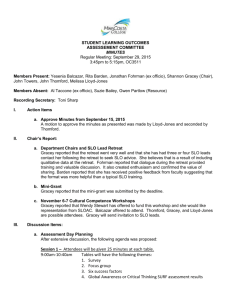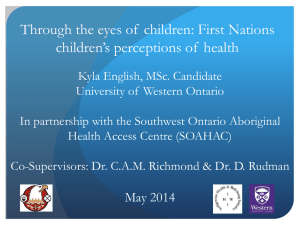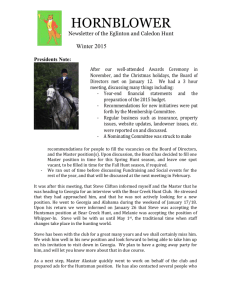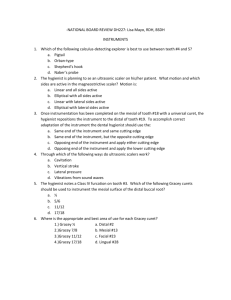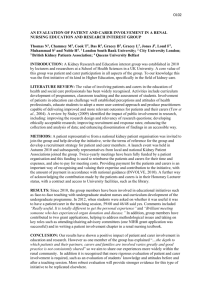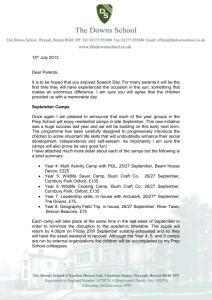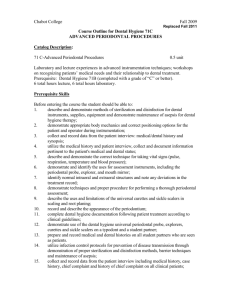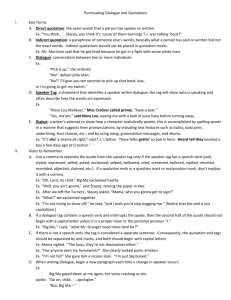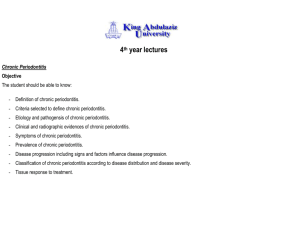Teacher Notes – Gracey - University of Queensland Press
advertisement
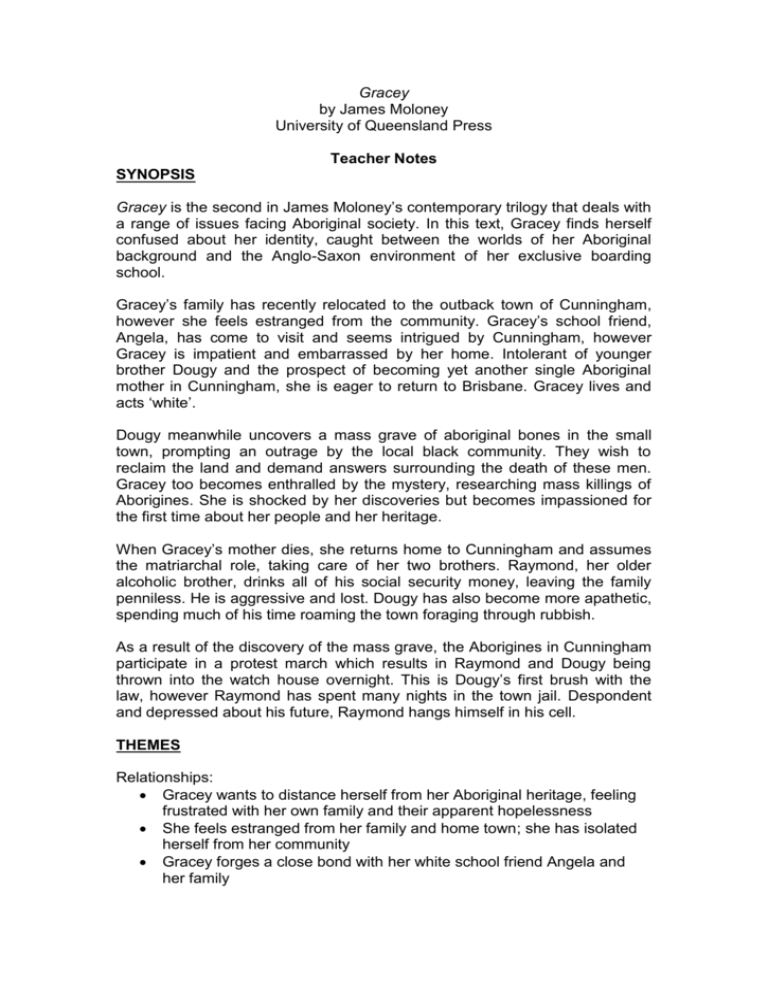
Gracey by James Moloney University of Queensland Press Teacher Notes SYNOPSIS Gracey is the second in James Moloney’s contemporary trilogy that deals with a range of issues facing Aboriginal society. In this text, Gracey finds herself confused about her identity, caught between the worlds of her Aboriginal background and the Anglo-Saxon environment of her exclusive boarding school. Gracey’s family has recently relocated to the outback town of Cunningham, however she feels estranged from the community. Gracey’s school friend, Angela, has come to visit and seems intrigued by Cunningham, however Gracey is impatient and embarrassed by her home. Intolerant of younger brother Dougy and the prospect of becoming yet another single Aboriginal mother in Cunningham, she is eager to return to Brisbane. Gracey lives and acts ‘white’. Dougy meanwhile uncovers a mass grave of aboriginal bones in the small town, prompting an outrage by the local black community. They wish to reclaim the land and demand answers surrounding the death of these men. Gracey too becomes enthralled by the mystery, researching mass killings of Aborigines. She is shocked by her discoveries but becomes impassioned for the first time about her people and her heritage. When Gracey’s mother dies, she returns home to Cunningham and assumes the matriarchal role, taking care of her two brothers. Raymond, her older alcoholic brother, drinks all of his social security money, leaving the family penniless. He is aggressive and lost. Dougy has also become more apathetic, spending much of his time roaming the town foraging through rubbish. As a result of the discovery of the mass grave, the Aborigines in Cunningham participate in a protest march which results in Raymond and Dougy being thrown into the watch house overnight. This is Dougy’s first brush with the law, however Raymond has spent many nights in the town jail. Despondent and depressed about his future, Raymond hangs himself in his cell. THEMES Relationships: Gracey wants to distance herself from her Aboriginal heritage, feeling frustrated with her own family and their apparent hopelessness She feels estranged from her family and home town; she has isolated herself from her community Gracey forges a close bond with her white school friend Angela and her family Gracey’s relationship with her two brothers changes after the death of their mother. Gracey assumes the matriarchal role. Gracey feels guilty about the relationship she has had with her mother since moving to Brisbane Identity: Gracey tries to forget she is black, living instead as a ‘white’ person whilst in Brisbane Gracey doesn’t wish to become yet another single, young mother in Cunningham. She disassociates herself from this future. Gracey eventually discovers that she has white blood in her veins. This confuses her identity further, although she embraces her aboriginality after discovering the truth about her great grandfather’s family Raymond’s suicide cements Gracey’s desire to fight for her people. She accepts her culture and heritage, although still feels much anger, confusion and doubt. Racial Issues: Aboriginal death in custody Single mothers Unemployment of Aborigines/feelings of helplessness/suicide ‘White man’s diseases’ such as alcoholism, lung cancer, emphysema Mass killings of Aborigines and the black community’s reaction after this discovery has been made WRITING STYLE The narration is shared by both Gracey and Dougy, with Gracey telling the majority of the story. Gracey’s chapters are told in first person, past tense, whereas Dougy’s chapters are written in first person, present tense. Both Dougy’s and Gracey’s voices are genuine and true to their characters. AUTHOR MOTIVATION Having explored some compelling themes in Dougy, James Moloney felt as though the story wouldn’t let him go. The characters had developed a life of their own out of the future he had imagined for them in the earlier story. He wrote this second story, intended to be the last, to find out what happened to them and to contrast the sense of hopelessness that he saw in Aborigine youths when he lived in Cunnamulla in the late 1970s against the prospect of a better life for those who adjusted well to a ‘white’ lifestyle. The character of Trent Foster was included to track the slide into prejudice that can happen to whites posted to such towns for ‘country service’. In developing the plot line, opportunities arose to explore a theme that was emerging in Australian thinking at the time – what responsibility does the contemporary Australian hold for crimes and maltreatment committed by earlier generations now dead. STUDY NOTES Why do you think Gracey has changed her name to Grace? What does this symbolise? Gracey is frustrated with Dougy at the start of the book. Why do you think she feels this way? Is she justified in having such feelings? Explain. Initially, Gracey seems intolerant with all that identifies her – her family, her township, her indigenous blood. Why is this? Does this change throughout the text? If so, how? Why? Gracey makes the comment that white people are afraid of “appearing to be racially prejudiced.” (p11) Do you agree with this statement? Can you give any examples from Gracey and the wider community to support your opinion? Raymond’s contract with a Sydney Rugby League club falls through. Raymond argues that this was purely a case of bigotry. (p14) Discuss Raymond’s perspective in comparison with the Football Club’s. There are three key events that shape Gracey: 1. The discovery of the mass grave and what ensues from this discovery 2. The death of Gracey’s mother 3. Raymond’s suicide Explain how each of these events contributes to Gracey’s acceptance of her Aboriginal heritage. How do these same events affect Dougy? Do you think that discovering Bert McNamara is her great grandfather affects Gracey as much as these other events? Explain your answer. Why is Kevin O’Shea so angry with Gracey for apologising to Bert after the black community attacked him for his grandfather’s involvement in the massacre? Should Gracey have apologised? The question is raised in Gracey of the ownership and responsibility by later generations for what has transpired earlier in history. Debate this issue. Should people apologise and accept the blame for the actions done by their forefathers? At Raymond’s funeral, Gracey makes the observation that there is “Rage. Red rage – black rage.” (p179) Explain what she means by this. What role does Paddy O’Shea play in Gracey? Write an editorial suitable for a quality newspaper on the subject of Aboriginal death in custody. Investigate this issue, using press clippings and media surrounding this issue eg Palm Island Why does the young police constable, Trent, lie in court about Raymond’s death? Why is he encouraged to resign? Trent only ever leaves messages for his father. They never speak person to person. Why is this? Does this have any significance to the story? Gracey visits the John Oxley Library to research the mass killings of Aborigines. Choose a topic to research, using the John Oxley Library or similar reliable sources of information. This could incorporate aspects of Gracey or the tracing of students’ own family trees. o Alternatively, use a variety of primary source documents such as photographs and newspaper clippings and have students investigate and draw valid conclusions by cross referencing such documents with secondary sources. At Gracey’s mother’s funeral, Paddy O’Shea makes the political statement that, “This Murri woman was another victim of the invading white man...just the same as those six dead Murris found in a shameful mass grave...She died of lung cancer, which is a white man’s disease that no Murri ever suffered until the curse of the white settlement was forced upon this land.” (p119) o Discuss Paddy O’Shea’s comment. Was the funeral the appropriate place to voice this opinion? Why? Debate the Howard Government’s Intervention Policy that was introduced by Mal Brough in 2007. (Footage of this is available from programs such as The Howard Years documentary ABC 2008) How would Gracey have been different had Gracey’s mother not died? Find out more about mass killings of Aborigines across Australia during early white settlement. Use extracts from Matthew Flinders’ diary as he circumnavigated Australia of his observations of the ‘natives’. (Available online – try a tie such as Project Gutenberg’s “A Voyage to Terra Australis Volume 1 by Matthew Flinders” http://www.gutenberg.org/files/12929/12929-h/12929-h.htm ) How do such observations compare with those of Stan McNamara? (p91-95) Were the killings justified? Were the Aborigines aggressive or merely feared by the whites? Why did Raymond commit suicide?
